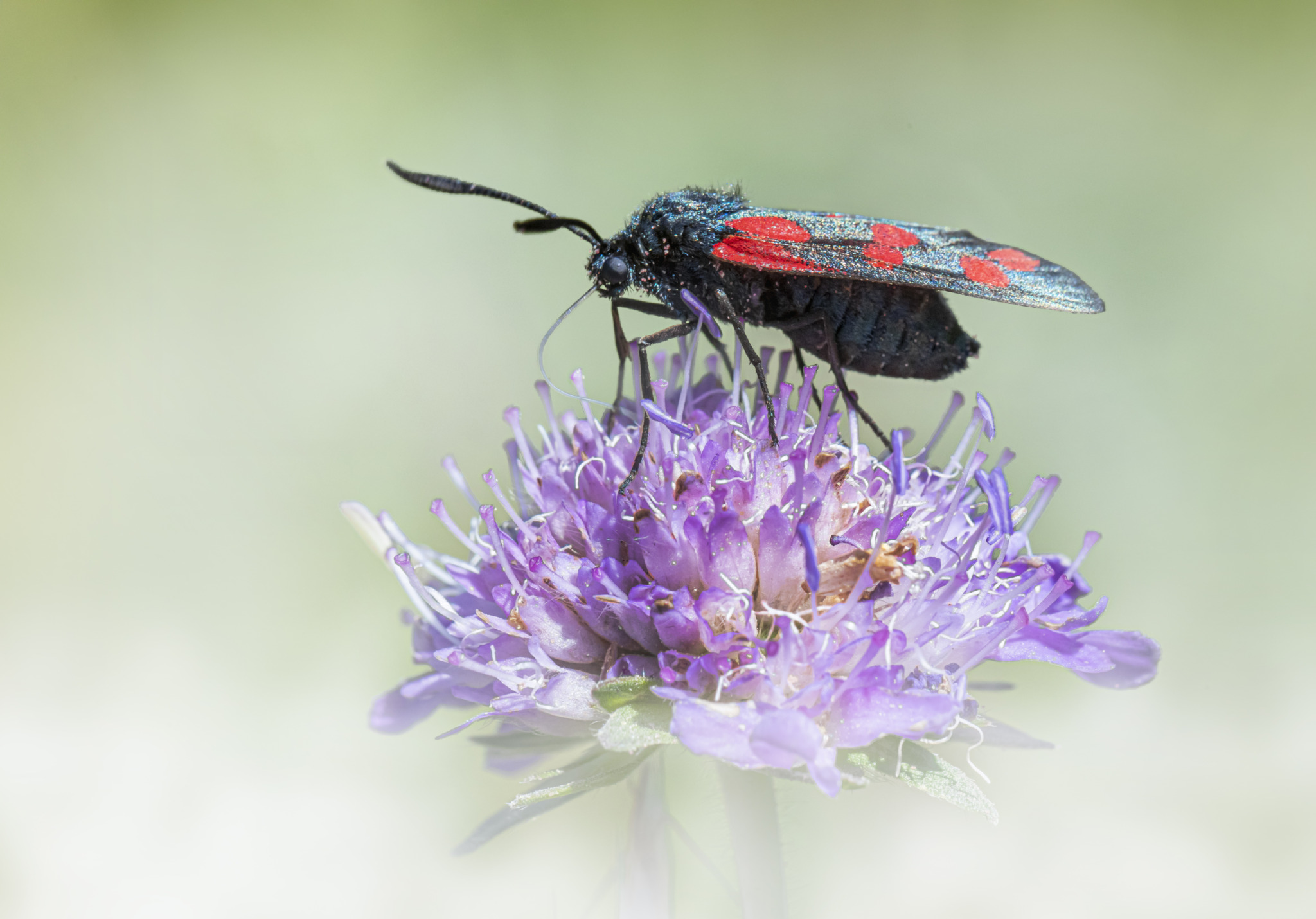🦋
The Narrow-bordered Five-spot Burnet is a striking day-flying moth from the family Zygaenidae. With its metallic green-black wings and vivid red spots, it’s often mistaken for a butterfly. Found fluttering in meadows and grasslands in summer, it’s also a classic example of aposematism—using bright colors to warn predators of its toxicity.
🧬 Taxonomy
- Kingdom: Animalia
- Phylum: Arthropoda
- Class: Insecta
- Order: Lepidoptera
- Family: Zygaenidae
- Genus: Zygaena
- Species: Z. lonicerae
🌈 Identification
- Wingspan: 30–38 mm
- Forewings:
- Metallic blackish-green base
- Five crimson-red spots, usually separated
- Narrow black borders around spots—hence the name
- Hindwings:
- Bright red with a narrow black border
- Antennae: Thick, clubbed, and slightly curved—typical of burnets
- Flight style: Slow, fluttery, butterfly-like
🟦 Key Difference from Five-spot Burnet (Zygaena trifolii):
Z. lonicerae has narrower black margins around red spots and tends to be slightly larger and darker.
🐛 Life Cycle
🟢 Egg
- Laid in clusters on host plants (especially underside of leaves)
- Incubation lasts 1–2 weeks
🟡 Larva (Caterpillar)
- Appearance: Yellowish-green with black spots and tiny white hairs
- Feeding: Feeds mainly on vetches and trefoils, particularly meadow vetchling (Lathyrus pratensis)
- Overwinters as a caterpillar
🟠 Pupa
- Forms a papery, pale yellow cocoon attached to a grass stem or leaf
- Pupation lasts 2–4 weeks in spring or early summer
🔴 Adult
- Flies from June to August, during sunny weather
- Lives for only a few weeks, focused on reproduction and nectar feeding
🌍 Habitat & Range
- Distribution: Widespread across Europe and Western Asia
- Common in the British Isles, particularly in southern and central England
- Preferred habitats:
- Flower-rich meadows
- Chalk grasslands, roadsides, and coastal cliffs
- Anywhere with abundant wildflowers and legumes
🍽️ Feeding
- Adults:
- Nectar feeders
- Prefer knapweed, thistles, scabious, vetches, and clover
- Larvae:
- Feed primarily on meadow vetchling, tufted vetch, and bird’s-foot trefoil
🛡️ Defense & Aposematism
- Bright red and black coloration serves as a warning (aposematic) to predators
- Contains cyanogenic compounds (cyanide-based toxins)
- Released when attacked or crushed
- Unpalatable to most birds and reptiles
- If threatened, may exude a yellow fluid from leg joints
❤️ Reproduction & Mating
- Mating occurs shortly after emergence
- Males use pheromones and visual cues to locate females
- Females lay eggs on suitable host plants, close to the ground
🔍 Conservation Status
- Generally not threatened
- Can be locally declining due to:
- Loss of wildflower meadows
- Intensive agriculture
- Overgrazing
- Protected in some regions under biodiversity initiatives
🧠 Fun Facts
- Although it looks like a butterfly, it’s a true moth
- Can be active in full sunlight, unlike most moths
- Sometimes found in groups feeding on flowers
- Important part of pollination networks
🧭 Field Tips for Spotting
- Best seen on warm, sunny days in July
- Look for red-spotted black moths fluttering low among wildflowers
- Often found near chalk grasslands, verges, or coastal meadows
Visited 308 times, 2 visit(s) today
Views: 969
Subscribe to the newsletter:
